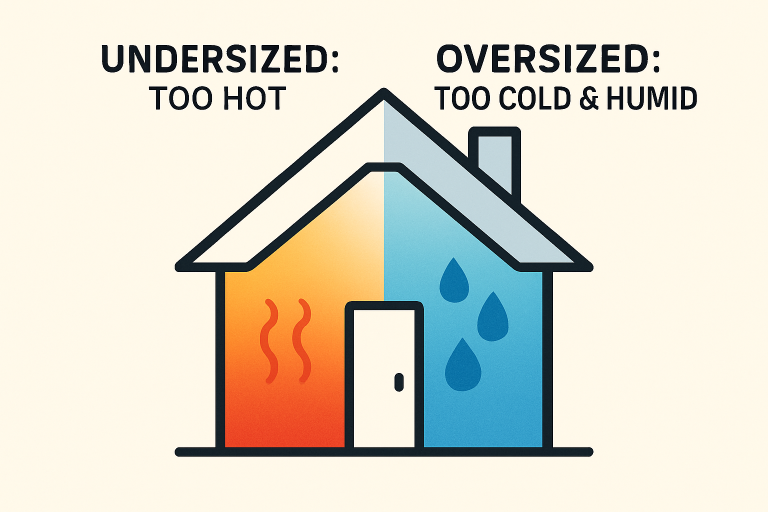Why A/C Size Matters
Choosing the right air conditioning unit is essential to maintaining comfort and energy efficiency in your home. An undersized unit may run constantly without thoroughly cooling the space, leading to higher energy bills and unnecessary wear. On the other hand, an oversized system can cool a room too quickly without properly dehumidifying, resulting in a damp, uncomfortable environment.
Common signs of improper sizing include inconsistent temperatures, frequent cycling, and increased humidity. Homeowners unsure about their system’s performance should consider consulting experienced technicians who specialize in evaluating HVAC needs, such as those offering A/C services North Carolina. These professionals can help determine whether your system fits your space and recommend solutions that improve long-term comfort and efficiency. Taking action early can prevent long-term damage and ensure your cooling system performs optimally through every season.

Signs Your A/C Unit Is Undersized
An undersized A/C unit struggles to keep up with your home’s cooling demands, especially during hotter months. Common signs include the system running constantly without effectively cooling the space, uneven temperatures from room to room, and persistent humidity. You may also notice increased energy bills due to the unit working overtime. If your A/C never reaches the set temperature or takes too long to cool down, it’s likely too small for the square footage it’s trying to cover. An undersized unit impacts comfort and shortens the system's lifespan due to constant strain and overuse.
Signs Your A/C Unit Is Oversized
An oversized A/C unit is a good idea but can cause more problems than it solves. One of the most common signs is short cycling, where the system turns on and off frequently without running long enough to cool or dehumidify your home correctly. You may also notice uneven temperatures between rooms, increased humidity, and higher energy bills. Excessive wear and tear on components is another red flag, as the frequent cycling stresses the system. If your home feels cool but clammy or your A/C runs in short bursts, your unit may be too large.
Determining the Right Size for Your A/C Unit
Avoiding the pitfalls of sizing errors begins with a detailed evaluation of your home’s cooling requirements. Achieving ultimate comfort, peak efficiency, and energy savings means taking a careful, data-driven approach to selecting your next air conditioner. Here are the essential steps:
Conduct a Professional Load Calculation
A load calculation by skilled HVAC technicians considers factors like insulation types, window orientation, ceiling heights, local climate, and occupants to determine the optimal cooling load for your property.
Consult with HVAC Experts
Certified HVAC professionals provide accurate assessments based on house layout, ductwork, energy usage, and comfort goals. Their guidance helps avoid sizing pitfalls and costly future repairs, ensuring the best possible results for upgrading, replacing, or installing a new system.
Factor in Seasonal Energy Efficiency Ratio (SEER)
The SEER rating of an A/C unit indicates its energy efficiency, and choosing a well-rated, appropriately sized unit can save money on operational costs, ensure superior comfort, and provide consistent humidity control, especially in light of rising energy costs and sustainability concerns.
Schedule Regular Maintenance
Regular air conditioning system maintenance ensures its performance, prevents potential issues, extends system lifespan, improves air quality, and maintains energy bills, despite possible issues triggered by improper sizing.



No comments:
Post a Comment
I love reading and responding to comments but in order to get my reply you must ensure you are NOT a no-reply blogger. If you are, here are some quick steps to change that!
1. Go to the home page of your Blogger account.
2. Select the drop down beside your name on the top right corner and choose Blogger Profile.
3. Select Edit Profile at the top right.
4. Select the Show My Email Address box.
5. Hit Save Profile.